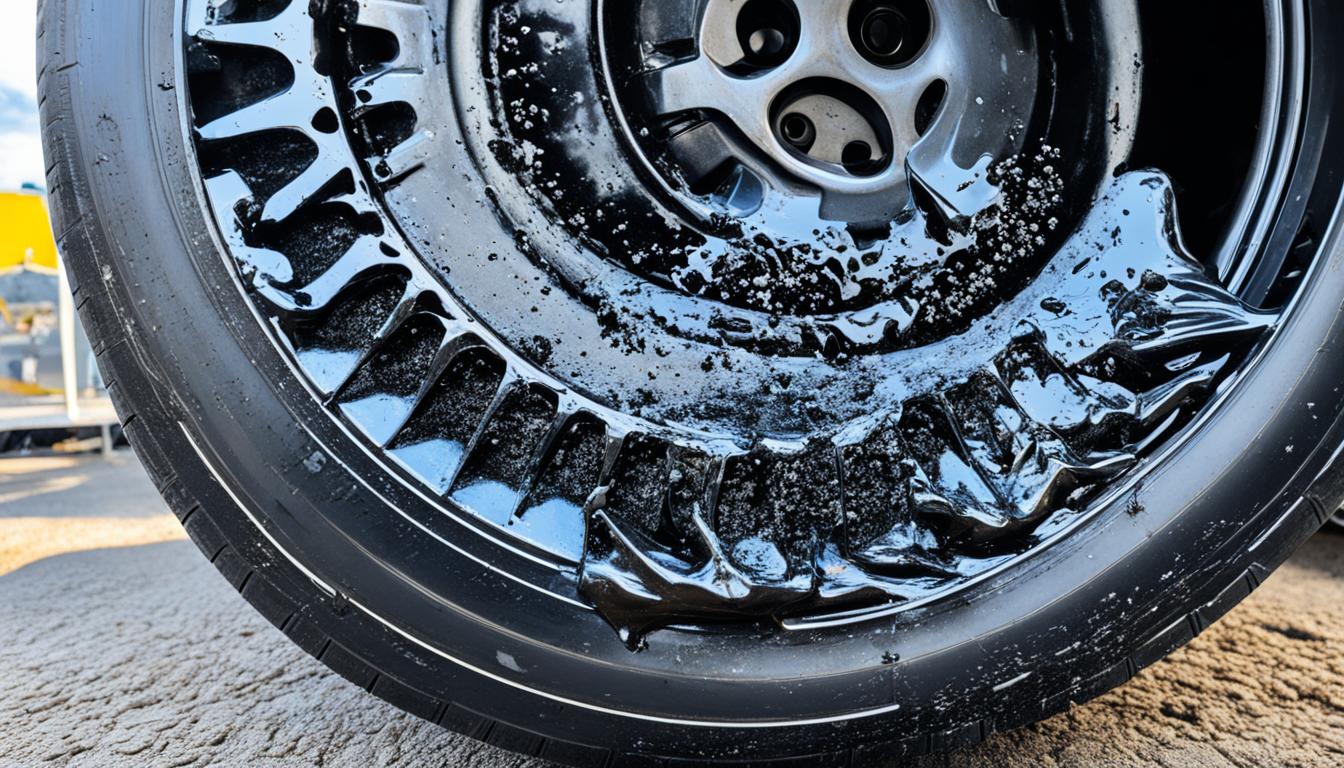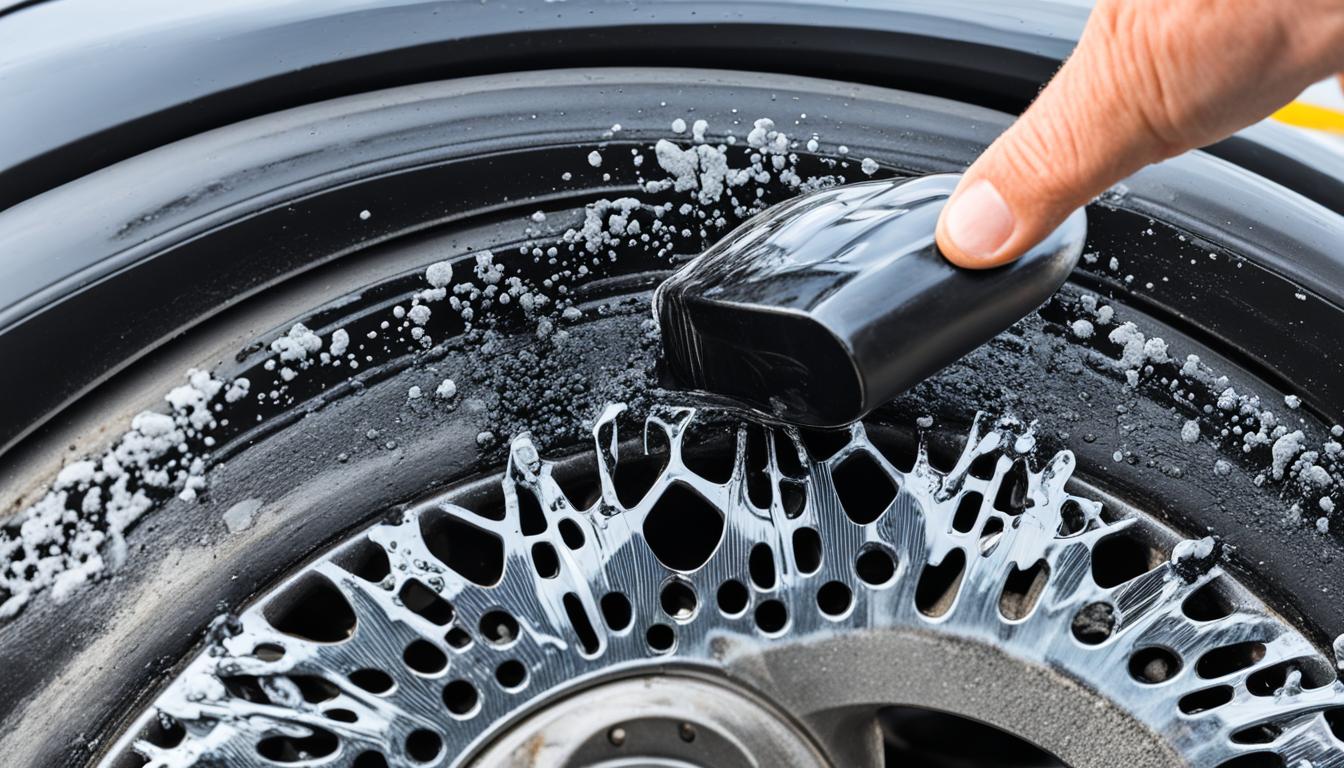Car Tar Removal

Tar Be Gone: The Ultimate Car Tar Removal and Cleaning Guide
Have you ever experienced the frustration of finding sticky tar residues on your beloved car? Whether it's marring the shine of your paintwork or stubbornly clinging onto your wheel wells and side doors, tar can be a major nuisance to deal with. As a car owner myself, I understand the annoyance and disappointment that comes with discovering these unsightly marks. But fear not! In this comprehensive guide, I will share with you the ultimate solutions for car tar removal and cleaning. Say goodbye to the frustrating battle with tar and hello to a sparkling clean car once again!

- Discover effective tar removal products like Goo Gone Automotive Goo & Sticker Remover
- Learn step-by-step instructions for removing tar from your car
- Understand the importance of regular car maintenance and cleaning in preventing tar buildup
- Explore various methods and DIY home remedies for tar removal
- Gain insights into post-tar removal car care to keep your car looking its best
The Problem with Tar and Effective Prevention Methods
When it comes to maintaining the pristine appearance of your car, tar can be a persistent nuisance. This sticky substance, commonly used in road construction, has a knack for finding its way onto your car's paintwork and leaving unsightly stains.
To minimize the chances of tar sticking to your car's surface, regular car detailing is crucial. By keeping your car clean and free from dirt and debris, you create a less inviting environment for tar to adhere to. Regular washing and waxing can do wonders in preventing tar buildup.
Another effective way to protect your car from tar is by using protective products such as paint protection film (PPF) or ceramic coating. These products provide an additional layer of defense against not only tar but also other road grime and contaminants. Investing in these preemptive measures can save you from the hassle and expense of extensive tar removal later on.

Protective products like paint protection film (PPF) can help prevent tar from sticking to your car's surface.
Various Methods for Tar Removal and DIY Home Remedies
When faced with stubborn tar stains on your car, there are various methods you can try for effective removal. Whether you prefer commercial products or DIY home remedies, there's a solution for you.
Commercial Tar Removal Products
One option for tar removal is using commercial tar removal products. These products are specifically designed to tackle tough tar stains and provide efficient results. Turbo Waterless Detailer and Decon Soap are two popular options that can effectively remove tar from your car's surface.

DIY Home Remedies
If you prefer a more DIY approach, there are several home remedies that can be surprisingly effective in removing tar from your car. These household items can work wonders:
- WD-40: Known for its versatility, WD-40 can also be used to remove tar. Simply spray WD-40 onto the affected area, let it sit for a few minutes, and then wipe away the tar with a clean cloth.
- Peanut butter: Believe it or not, peanut butter can help remove tar stains. Apply a small amount of peanut butter onto the tar, let it sit for a few minutes, and then gently rub it away with a cloth. The natural oils in peanut butter work to break down the tar.
- Mayonnaise: Similar to peanut butter, mayonnaise can be used as a DIY tar removal remedy. Spread a thin layer of mayonnaise over the tar stain, let it sit for a few minutes, and then wipe it away with a clean cloth.
- Bug spray: The ingredients found in bug spray can help dissolve tar stains. Spray a small amount onto the tar, let it sit for a couple of minutes, and then wipe away the residue with a cloth.
- Hand sanitizer: The alcohol content in hand sanitizer can effectively break down tar stains. Apply a small amount of hand sanitizer onto the tar, let it sit for a few minutes, and then wipe it away with a cloth.
Remember, each method has its own advantages, so choose the one that suits your preference and the products you have available. Happy tar removal!
Tips for Post-Tar Removal Car Care and Common Mistakes to Avoid
After successfully removing tar from your car, it is essential to take proper care to maintain its appearance and prevent future damage. Follow these tips for post-tar removal car care:
1. Wash the car thoroughly: After removing the tar, make sure to wash your car to remove any residue and ensure a clean surface. Use a gentle car wash soap and a microfiber cloth to avoid scratching the paint.
2. Polish the affected area: Tar removal can leave behind dull spots on your car's surface. To restore shine and protect the paint, use a high-quality car polish or wax. Apply it according to the manufacturer's instructions for best results.
3. Regular maintenance: Keeping your car clean and regularly washing and waxing it can prevent tar from sticking in the first place. This will help maintain its overall appearance and minimize the need for frequent tar removal.
Additionally, to avoid common mistakes during tar removal, remember the following precautions:
1. Avoid direct sunlight: Working in direct sunlight can cause the tar remover product to dry too quickly or leave stains on your car's paint. Choose a shady area or work during cooler hours of the day.
2. Don't leave the product on for too long: Leaving the tar removal product on your car's paint for an extended period can damage the finish. Follow the recommended time mentioned on the product packaging.
3. Use gentle materials: When wiping off the tar, use soft, non-abrasive cloths or detailing brushes. Rough materials can leave scratches and further damage the paintwork.
By following these post-tar removal car care tips and avoiding common mistakes, you can ensure your car stays in great condition and minimize the need for frequent tar removal.
